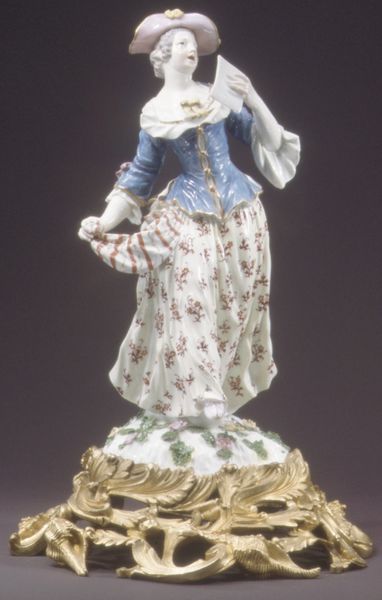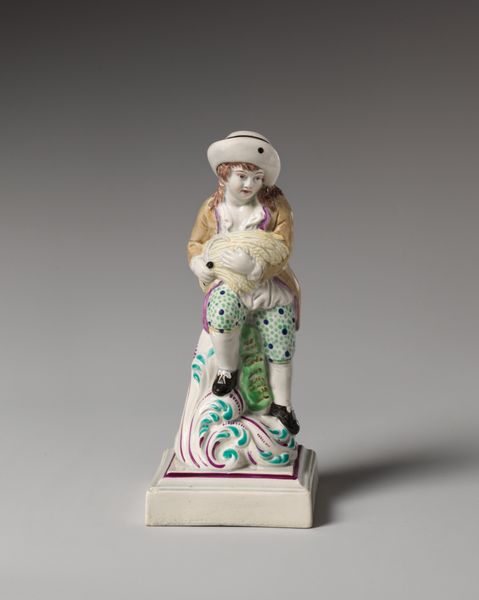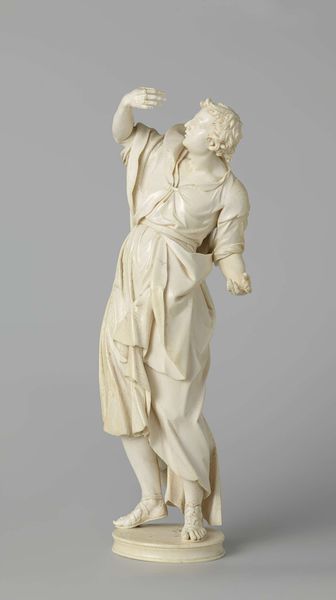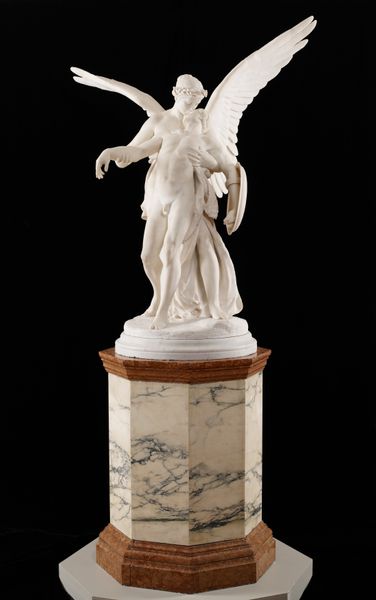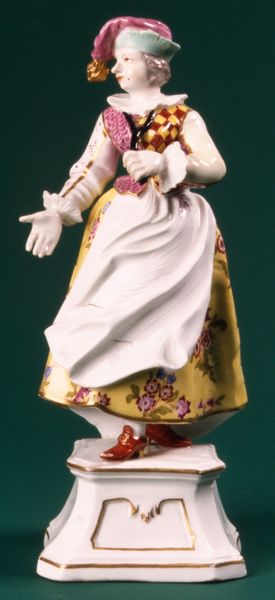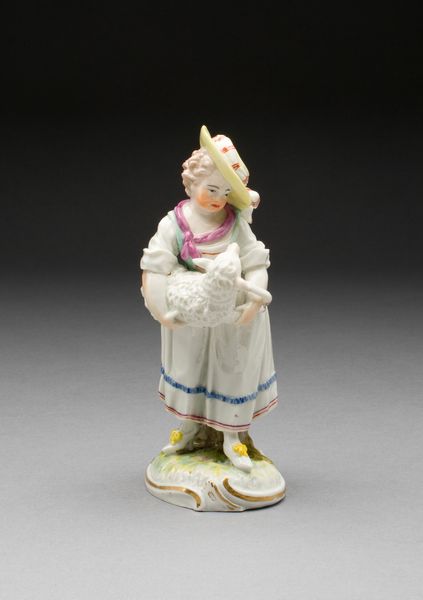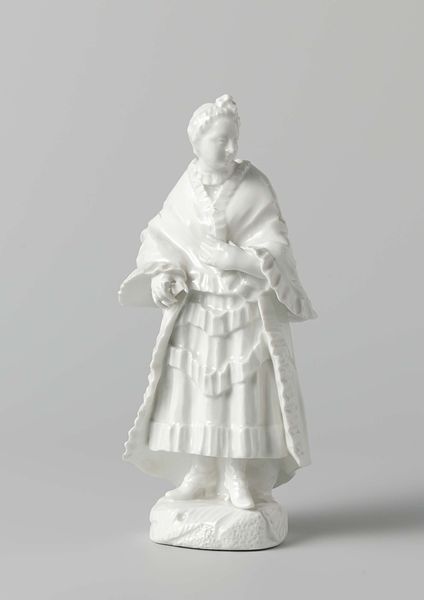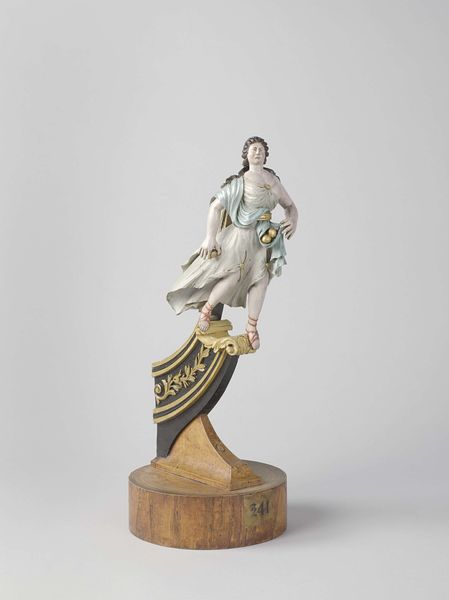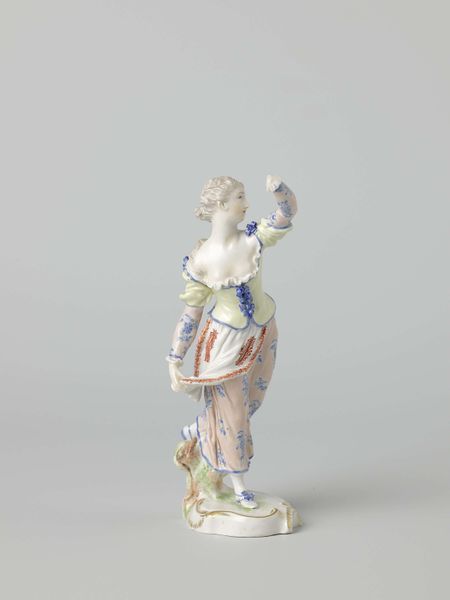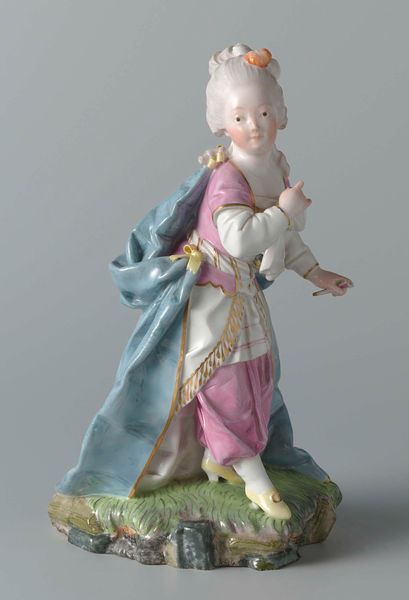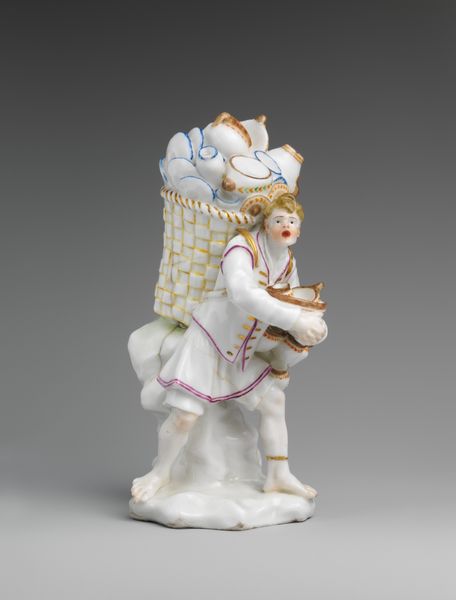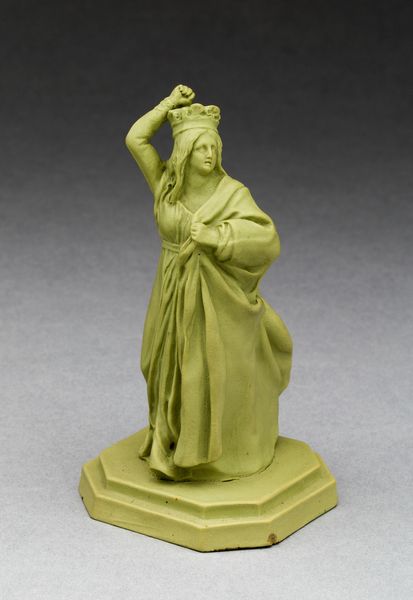
ceramic, porcelain, sculpture
#
portrait
#
baroque
#
ceramic
#
porcelain
#
figuration
#
sculpture
#
men
#
decorative-art
Dimensions: Height: 8 1/2 in. (21.6 cm)
Copyright: Public Domain
Curator: What an interesting piece, this sculpture, titled "Captain," thought to be crafted sometime between 1745 and 1758 by the Höchst Manufactory. It’s a porcelain figure, a type of decorative art really hitting its stride at that point in the Baroque era. Editor: He looks almost as if he's about to take flight! So flamboyant and light despite the ceramic—but the details are marvelous, the cool whites and blues. Very stylized for the mid-18th century. Curator: Höchst, you know, was one of the earliest porcelain factories in Germany, founded in 1746. These figures reflect the rising merchant classes, eager to emulate courtly fashions and pastimes. Editor: The uniform is, of course, meticulously detailed; the artist took time to show all those layers of status. Does he really stand for some high-ranking soldier, or is he maybe referencing a character from the popular theater of the time, a stage captain perhaps? Curator: Exactly, this blurring between theater and life was something embraced in the period; porcelain figures acted almost as celebrities or fashionable puppets on your mantelpiece. And color, as you pointed out earlier, was also becoming much more integrated into porcelain manufacture at the time. Editor: It speaks of a society that's obsessed with roles and performances, very aware of what they signal to the world. I’m also wondering about its circulation in society. Curator: Right, it was meant to circulate within the elite, to act as both a decorative and didactic object. To broadcast wealth, status and good taste of course, but the rise of decorative art was intended to show the education of society through allegorical subjects and improving histories. Editor: What’s fascinating is how the Baroque aesthetic carries weight as an indicator of cultural memory. These exaggerated postures aren’t just playful—they’re coded gestures designed to communicate something specific, almost lost to us now, but lingering within the object's form itself. Curator: We see that the market economy influences decorative trends. It’s fascinating to observe these details which are themselves records of a world and social ambitions past. Editor: Exactly! A delightful journey from studio to salon and back to us here in the museum, each pose frozen in time and speaking to different ages in its own way.
Comments
No comments
Be the first to comment and join the conversation on the ultimate creative platform.
